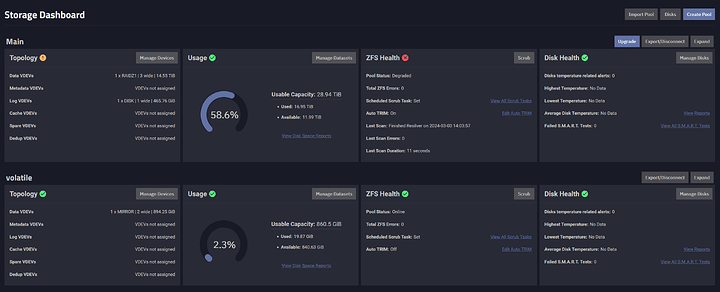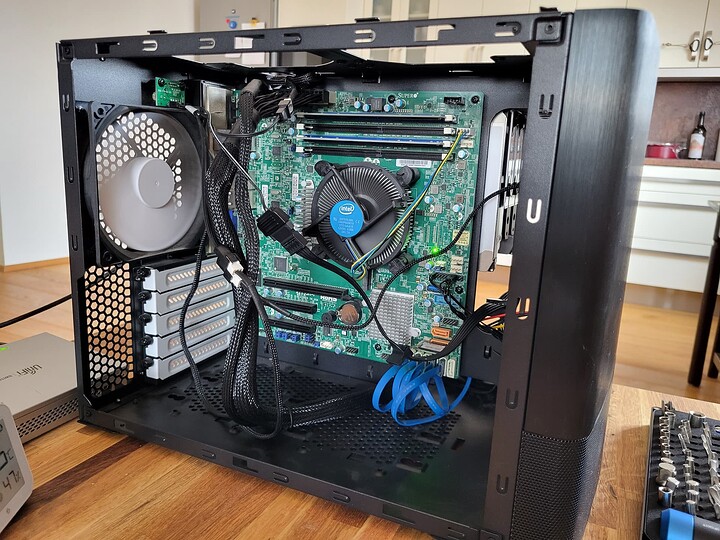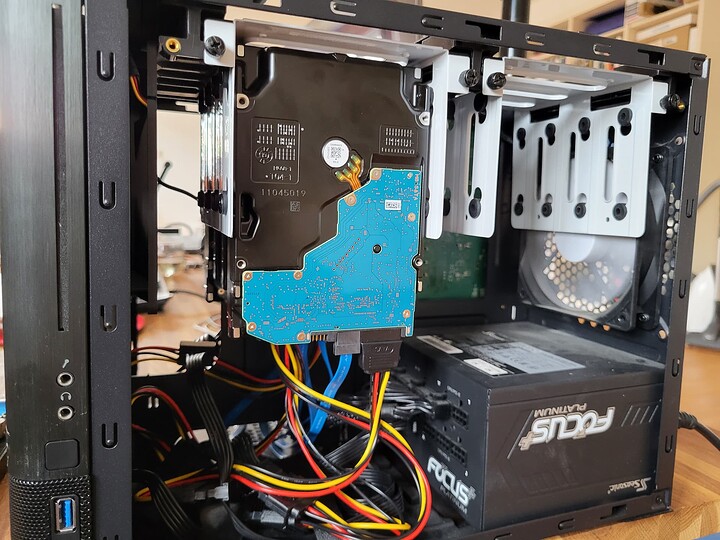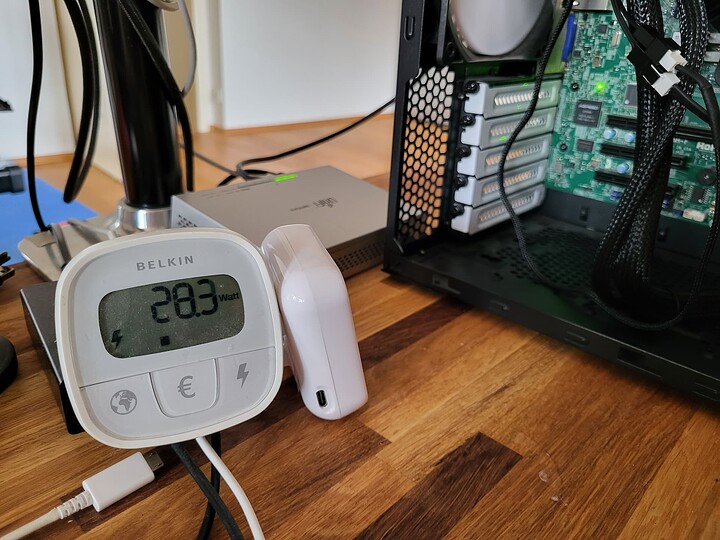What kind of setup do you have? If its traditional picopsu + powerbrick, conversion loss might get that bad.
Some oem ac-dc psu were suprisingly inefficient and getting good known ones was suprisingly hard.
EDIT: to add some number for reference, here my truenas DIY:
HW:
- Supermicro x11ssh-f ; 2017
- Xeon E3 1225 v6 4C4T skylake era ; 2017
- 2x16 DDR4
- 1x32GB system SATADOM drive
- 3x16TB toshiba enterprise MG08 drives in raidZ1 + 1x samsung 860 EVO log drive ( 1 DRIVE currently offlined and rent for RMA)
- 2x 960 GB samsung DCT sata ssds mirror for ix-app dataset
- Seasonic prime 550W (80+ platinum) 2017
=> 28 TB effective storage + 860 GiB ssd scratchpad. HDDs do not spindown. There no addon cards, i.e no HBAs, no additional nics etc.
PSU is overkill, but it was cheap in 2017, despite the reputable OEM and efficiency grade. I dont think there were any platinum psu in sub 550W category available.
Power measuremnt at wall at 240V:
- startup peak power use 60W
- idle with apps running on ssd zpool 28W
- active writes to main dataset 38-42W
So yeah, those helium filled drives are mighty efficient. Keep the ix-app dataset off them though, it constantly wakes them up for little to no reason.
I will be replacing main pool with mirror of 2x 20 TB toshiba MG10 drives when they arrive.



